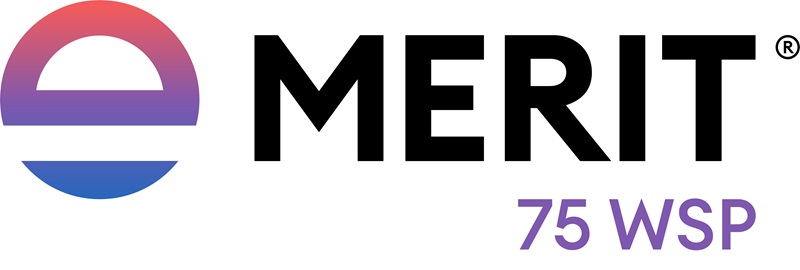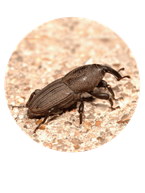The Problem
Chinch bugs are native to North America and found across most regions of Canada, the United States, and Mexico. The hairy chinch bug (Blissus leucopterus) is the dominant species throughout the Midwest and Northeast and feed on all cool-season turfgrasses as well as zoysiagrass. The southern chinch bug (Blissus insularis) is particularly damaging on St. Augustinegrass as well as bermudagrass throughout the southern United States. Unlike the hairy chinch bug with only 1-2 generations per year, the southern chinch bug can have 4-5 generations per year in areas including southern California, Texas, and the southeastern states. In Florida, 7-10 generations are possible each year. Regardless of the chinch bug species, all chinch bugs produce 5 nymphal stages before maturing into adults. All nymphal stages as well as chinch bug adults are capable of damaging turfgrasses.
What to Look For
First instar nymphs are orange with a beige stripe that runs horizontally across the mid-section. Early instar nymphs are incredibly small, with most of them being just under 1 mm in length. As nymphs mature in size, the orange color gradually gives way to a more of a dark brown to grey appearance. It is not until the 5th instar stage when wing pads are fully distinguishable, and the overall color of the chinch bug is black. Fully mature chinch bug adults will either be short-winged adults (cannot fly) or long-winged adults (can fly) and will be approximately 3 mm in length. Despite the ability to fly, most long-winged adults will preferentially crawl along the surface of the ground.
Chinch bugs overwinter as adults in late fall. Common overwintering sites include the turfgrass thatch, mulch beds, and beneath landscape rocks. In Florida, the southern chinch bug may remain active all year. In spring, chinch bug adults migrate into turfgrass areas to begin feeding and mating. Females lay eggs when daytime temperatures exceed 60°F. Each female can lay 200-300 eggs in each reproductive cycle. In the Midwest and Northeast, the eggs of chinch bugs may hatch in mid-to-late May depending on the region and weather. Further south, eggs can hatch in early spring after the onset of warmer temperatures.
Chinch bug nymphs and adults have piercing-sucking mouthparts that injure turf by withdrawing sap from leaf, sheath, crown, and stem tissues. During feeding, chinch bugs also inject salivary toxins into the plant causing coagulation within stem and leaf tissue, which affects the plant’s ability to transport water and nutrients. Initial symptoms of chinch bug feeding include reddish purple discoloration of the leaf blade margins. As damage progresses, the affected leaves turn yellow and turf may thin. As feeding intensifies, plants turn straw colored, and resemble drought symptoms but do not respond to irrigation or fertilization. If left untreated, large swaths of turf decline and death can occur. Turfgrasses grown on south facing slopes that receive full sun are at most risk of decline.
The Solution
Populations of newly emerged chinch bug nymphs increase quickly in the spring after the onset of warmer weather. Routine scouting is critical to best time your insect management program. The best conditions to scout for chinch bug activity is warm and sunny. The use of a tin can flush is a useful technique to monitor populations of chinch bug nymphs.
Contact insecticides, such as Barricor® SP (a new generation pyrethroid insecticide), should be applied during conditions when chinch bug nymphs are most active (warm and sunny). Higher rates should be used when chinch bug populations are elevated and when the forecast is favorable for continued development, temperaturesabove 70°F. Tank mixing Barricor SP with a systemic insecticide (such as Merit® or Tetrino®) will provide greater residual control of chinch bugs and offer a broader spectrum control of other insect pests such as white grubs, sod webworms, fall armyworms and billbugs.
The number of insecticide applications to control chinch bug populations season-long will depend on the region and weather. In northern climates where 1-2 generations of the hairy chinch bug are present, a single application of Barricor SP plus Merit or Tetrino will normally be satisfactory depending on the year. This application is best timed when 2nd and 3rd instar nymphs reach peak populations. Conversely, in southern climates, a programmatic approach is necessary for season-long control with several generations of the southern chinch bug. Applications of Barricor SP tank-mixed with either Merit or Tetrino applied every 6-8 weeks can be highly effective depending on environmental conditions and existing chinch bug populations.
| Solution sheet - Chinch bugs |












